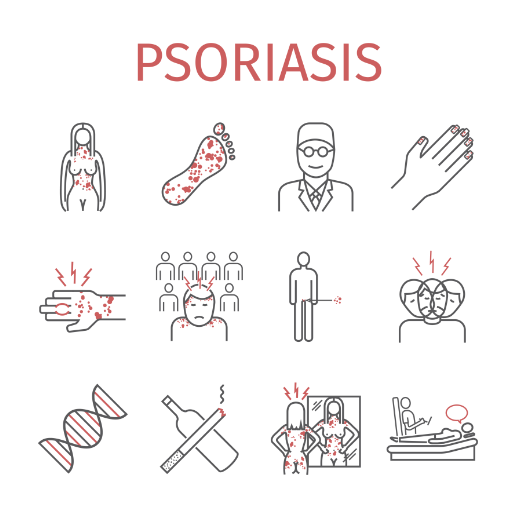What to know about psoriasis, its causes, complications, and the latest breakthrough treatments
When dreaming of her perfect wedding day, psoriasis definitely did not factor into Jillian O’Neil’s plans. O’Neil always wanted to wear her hair up on her special day, but with scaly patches growing down her neck like tree branches, her dreams were disappearing.
O’Neil, 31, became self-conscious of the itchy patches spreading across her scalp and neck at the end of high school when her dermatologist started her on treatments.
Also read-Cervical Cancer : A Patient’s Guide To Cervical Cancer
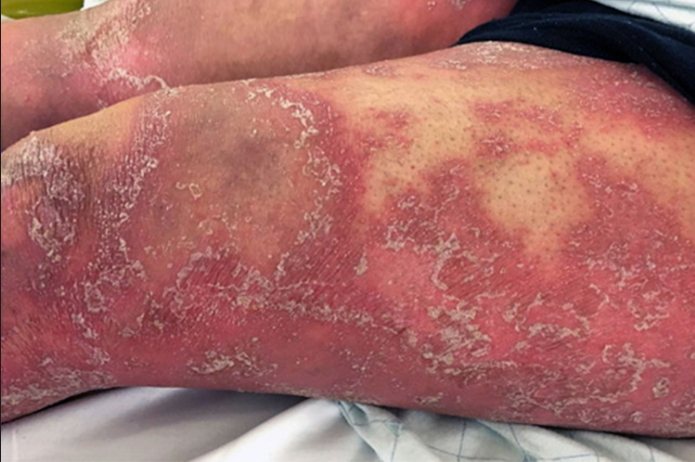
“My dermatologist tried everything that was available at the time, and nothing worked,” recalls O’Neil, a dietitian and personal trainer in New York City. “I even started taking natural therapies, but that didn’t stop the itchiness or flaky skin symptoms. I just became more and more self-conscious of my skin.”
After a visit to the dermatologist in 2022, O’Neil was given a sample of a new medicine for plaque psoriasis called Zoryve (roflumilast). The topical, non-steroidal cream started to make a difference and clear up her skin. The plaques and scaly patches have practically disappeared since she started her daily treatment, allowing O’Neil to wear her hair up with confidence on her wedding day in January 2024.
O’Neil has well-known experience.
“Many people who struggle with it frequently go for a long time without receiving a diagnosis, don’t get well with first treatments, and keep trying different approaches until they find something that works,” says Dr. Mark Lebwohl, dean of clinical therapeutics and professor of dermatology at the Icahn School of Medicine at Mount Sinai in New York City.
What is psoriasis?
A common autoimmune condition occurs when the body’s defenses mistakenly target healthy cells. It is typified by red, frequently uncomfortable skin lesions all over the body.
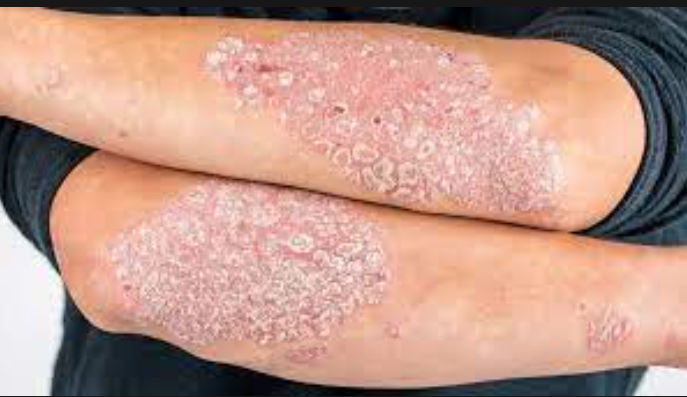
According to Dr. Vanessa Johnson, a dermatologist with Health First Medical Group in Viera, Florida, “this is caused by extra proliferation of the skin.” “The skin turns over much faster than normal skin, which causes the skin’s surface to become patchy with a build-up of cells.”
Psoriasis symptoms
Painful red, silvery, scaly skin patches known as plaques are the main signs and symptoms of psoriasis. They are caused by an excess of skin cells. It may appear like a rash at first, but it usually gets worse with time.

Additional signs and symptoms could be:
- Skin lesions that are elevated or inflamed may have white, silvery scales on top.
- Skin that is dry, bleeding, or flaking
- Pain and burning or itching sensations around the affected areas.
- Ridged, crumbly, discolored, thick nails that pit and are discolored in toenails
- Painful, swollen joints.
“My patients come to me for treatment of it because it’s itchy, painful, and often affects their quality of life,” Johnson says. “In more severe cases, it can cause cracking of the skin, bleeding, and pain.”
Types of psoriasis
Psoriasis affects more than 3% of the U.S. adult population, or about 7.5 million people, according to the National Institutes of Health Foundation.
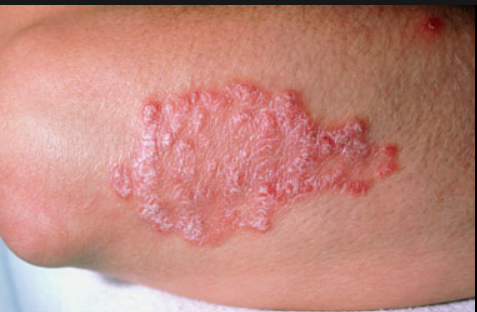
The most common type of it is plaque psoriasis, which accounts for about 80% to 90% of all psoriasis cases. It usually presents as large, red circular areas of flaky skin on the elbows, knees, back, and scalp. In severe cases, it can cover the entire body.
Psoriasis causes
As with other autoimmune diseases, elements of the immune system attack the body’s own cells, leading to the development of the skin symptoms associated with the disease.
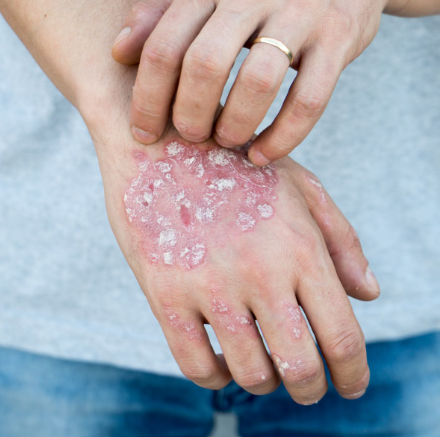
Typically, skin cells grow and shed in a month. With it, skin cells multiply and pile up on the surface of the skin. Although the exact cause of it is still undetermined, experts believe that cytokines, a form of protein involved in the growth and development of skin cells, are responsible for the over-proliferation of skin cells associated with the condition.
“Elevated cytokines cause the skin to get red and the body to make new skin cells in days rather than weeks. This results in a buildup of thick, red, and scaly skin,” Johnson says.
Risk factors and triggers
Although anyone can develop it, certain risk factors and triggers can increase the chance of developing the condition.
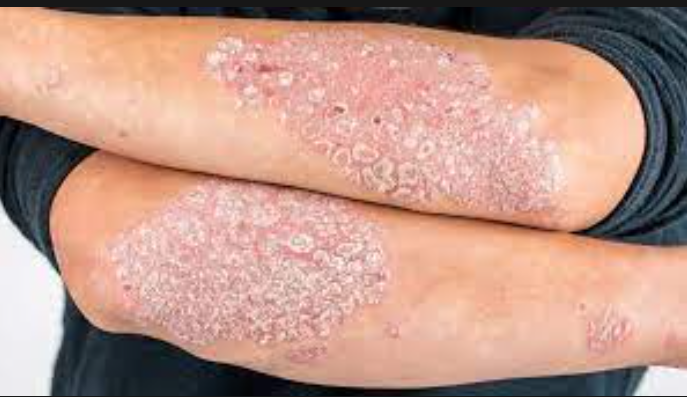
- Family history and genetics. It is known to run in families. If you have a relative who has the disease, you are more likely to carry the gene that causes the disease.
- Certain infections or skin injuries, such as strep throat or sunburn, can trigger the development of psoriasis.
- Certain medications, including lithium, prednisone, and hydroxychloroquine, have been shown to trigger psoriasis.
- Smoking.
- Stress.
- Obesity.
“The two most common times to develop psoriasis are in your 20s or 30s or in your 50s or 60s,” says Dr. Jessica Kaffenberger, a clinical associate professor of dermatology at the Ohio State University Wexner Medical Center. “But children are not immune, and neither are middle-aged or older adults.”
The Psoriasis Foundation reports that about 10% to 15% of those with psoriasis get it before age 10.
Diagnosing psoriasis
Psoriasis is typically easily diagnosed through a physical examination of your skin and a medical history. In rare instances, your doctor may conduct a skin biopsy, a procedure in which a small piece of affected tissue is sent to the lab for detailed analysis, to make a definitive diagnosis. This occurs more often when the patch of psoriasis is near the scalp line.
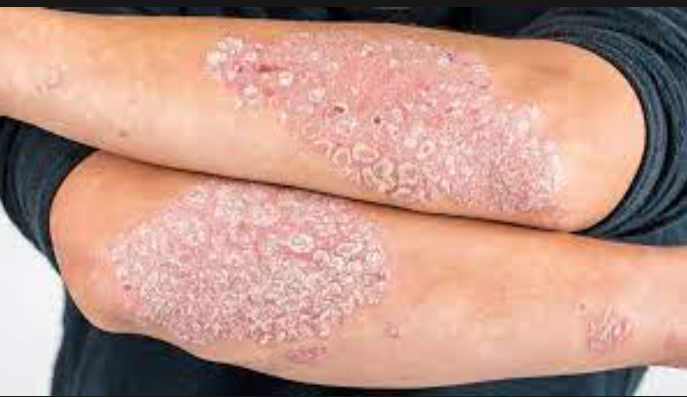
Psoriasis treatment advancements
People living with psoriasis have more treatment options for clearing up their skin than ever before.
“Psoriasis treatment has come a long way, especially in the last five to 10 years,” Lebwohl says. “Although the old goal of psoriasis treatment was to make psoriasis slightly better, the tangible goal now is to help people achieve clear skin.”
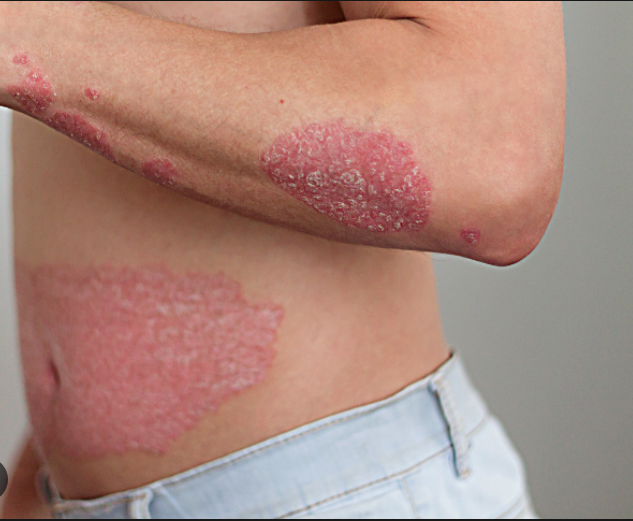
In the early 2000s, the FDA approved Enbrel (etanercept), Remicade (infliximab), and Humira (adalimumab) that were administered through injection or infusion. Today, there are 16 medicines available in topical creams or pill forms to treat psoriasis, with four new drugs approved since early 2022.
Newer medications take advantage of science’s growing understanding of what causes psoriasis and how it works.
“We are now able to more specifically target the exact chemicals—the cytokines—that are elevated in psoriasis, which results in clear skin with minimal to no side-effects,” Kaffenberger says.
These new medicines have proven to be much more effective because they are able to modulate the specific pathways in the immune system that drive psoriasis.
“That is why we have many effective and, more importantly, safe medications now that give people life-changing response rates,” says Dr. George Han, associate professor of dermatology at the Zucker School of Medicine at Hofstra/Northwell.
Within the past year, several of these lesser-known forms of psoriasis now have their own approved treatments.
Also read-Gestational Diabetes : A Guide to Gestational Diabetes And Its Symptoms
images source: Google
Disclaimer: The opinions and suggestions expressed in this article are solely those of the individual analysts. These are not the opinions of HNN. For more, please consult with your doctor.







